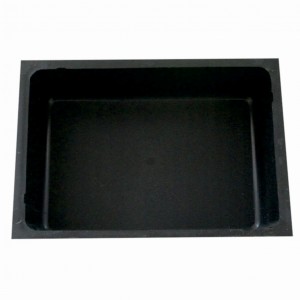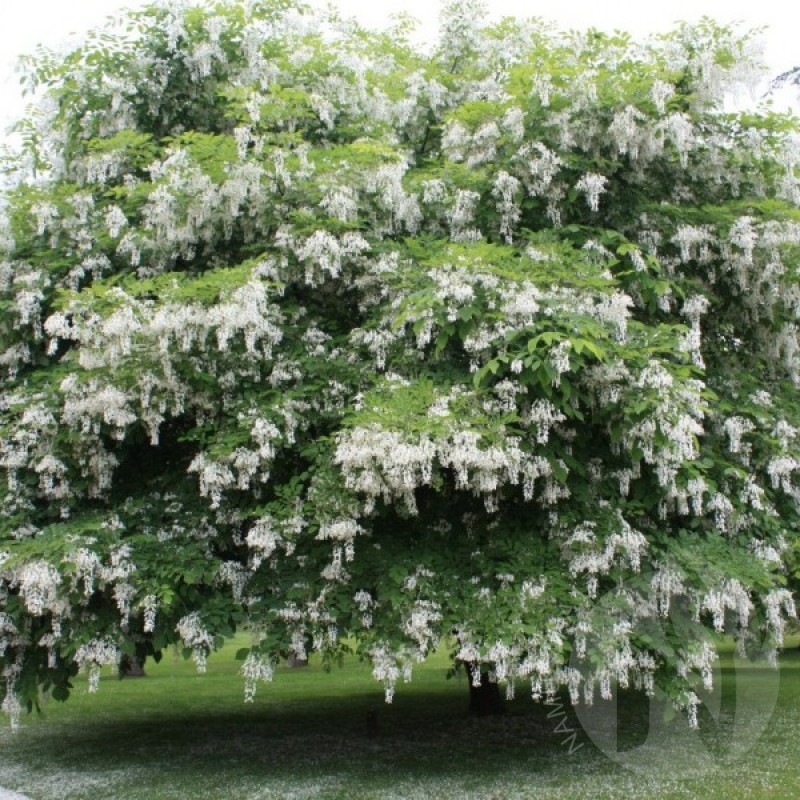
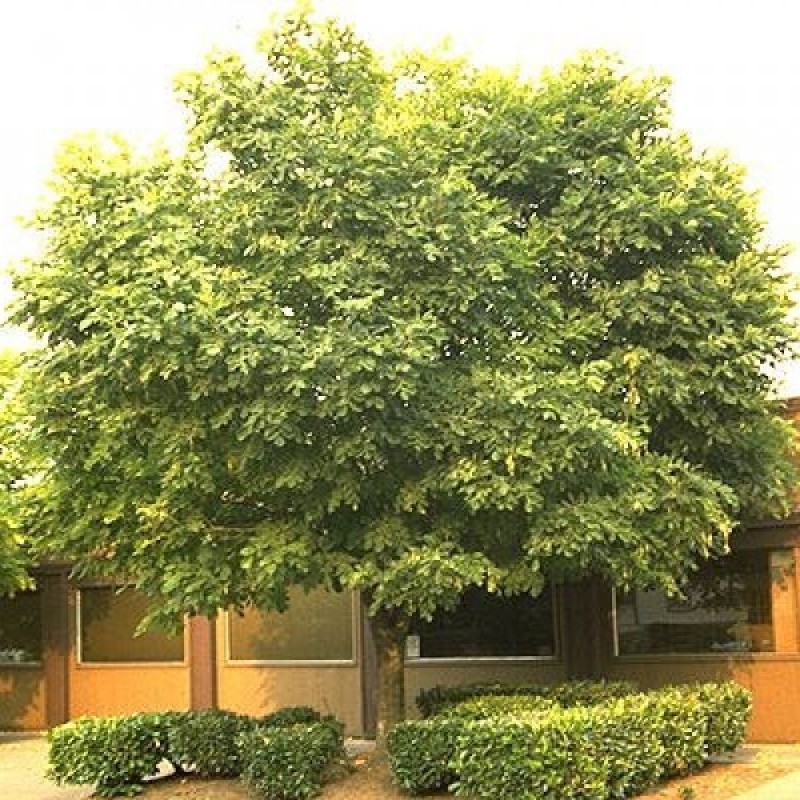
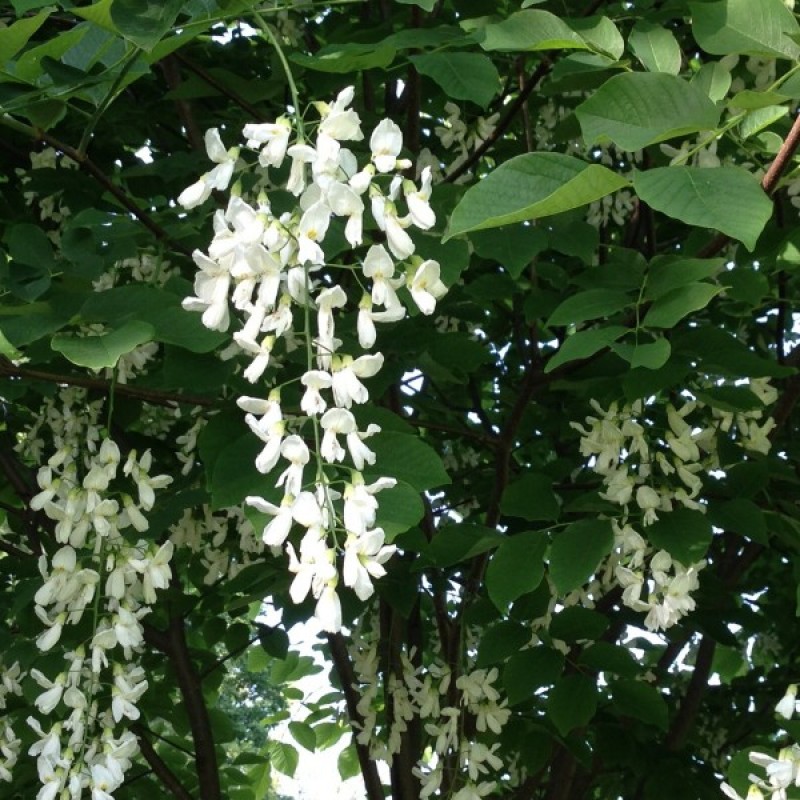
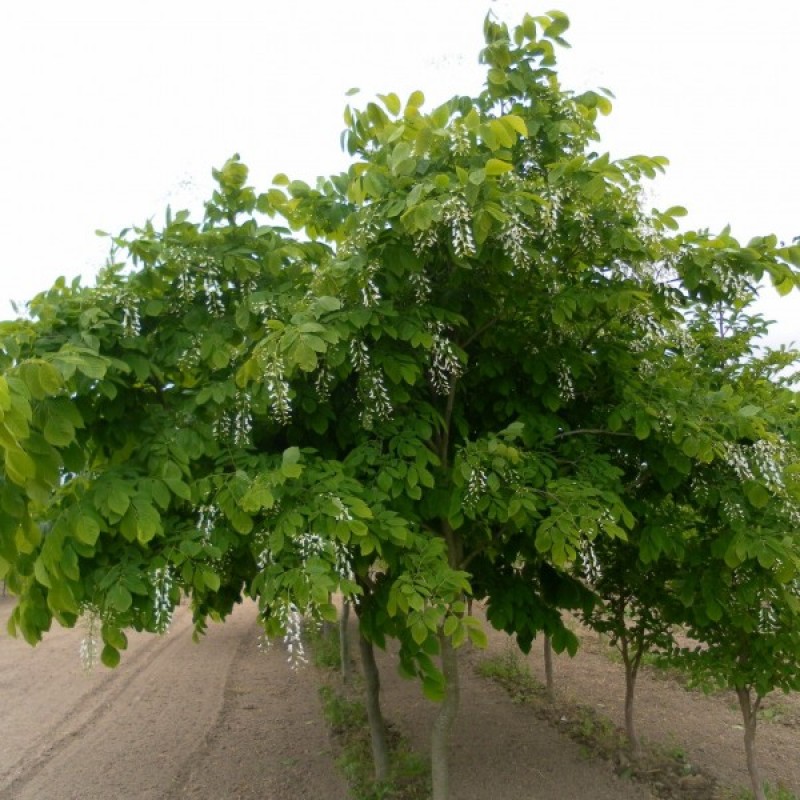
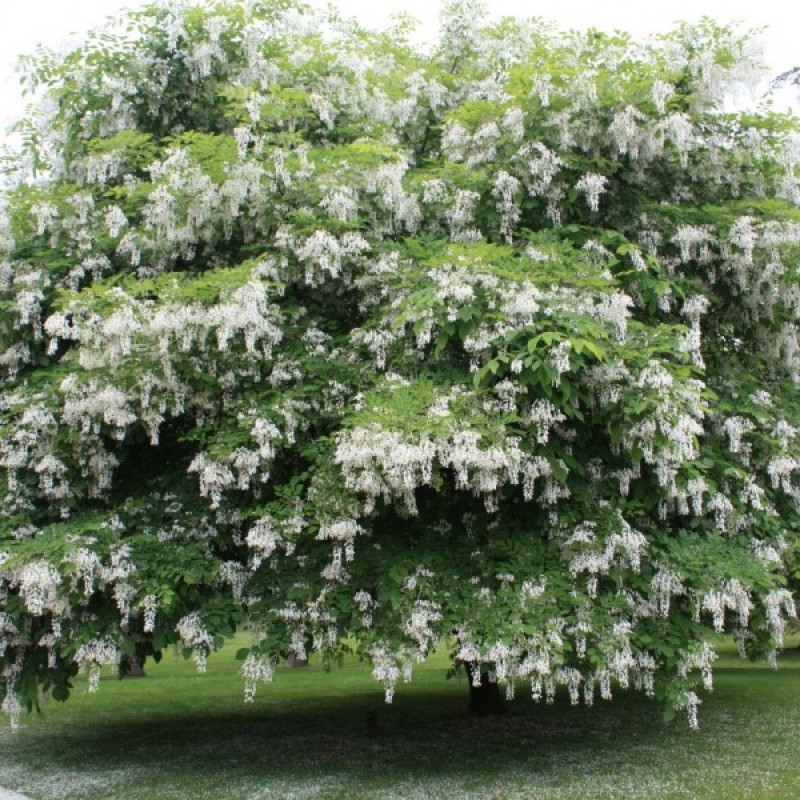
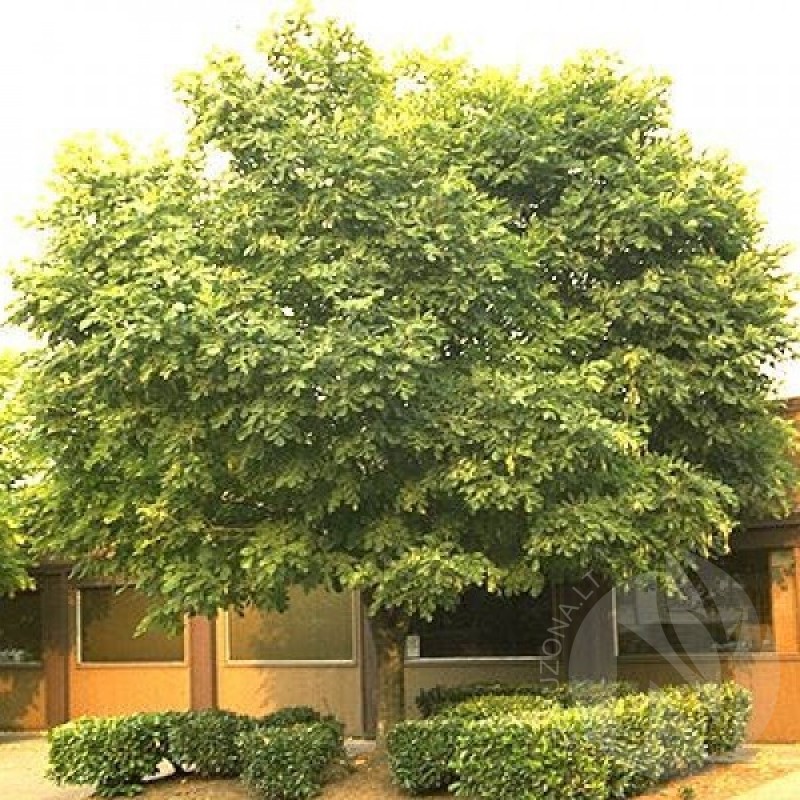
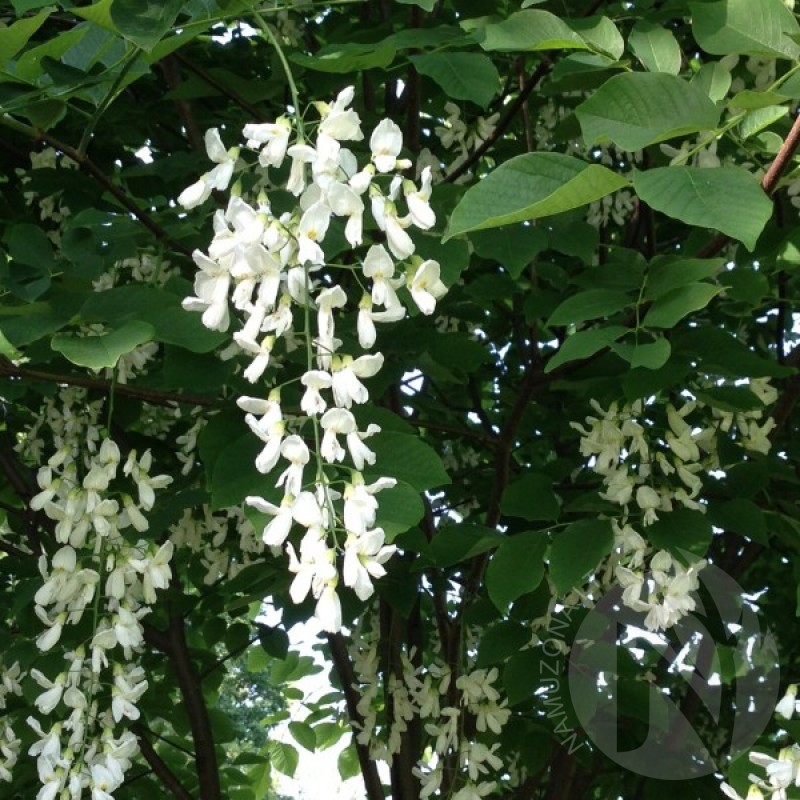
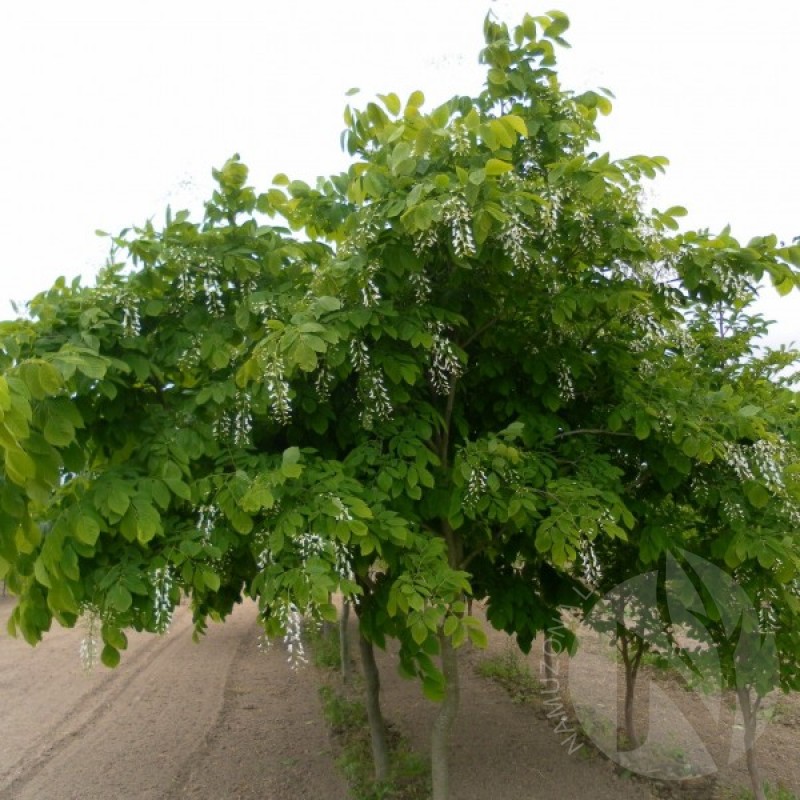
PAY ATTENTION!
All seeds (except SOLD OUT) are available for immediate shipping and will be dispatched within 1-2 business days.
INFORMATION NEEDED? PLEASE CONTACT US NOW!
Lovely drooping chains of white blossoms in late spring is the forte of the yellowwood, but its bright green leaves that become a brilliant yellow in autumn is also spectacular. A deciduous tree from the American Southeast (North Carolina to Tennessee and Kentucky), it attains a rounded shape with low and spreading branches. Its smooth bark is sandy brown but becoming increasingly gray with age. The name "yellowwood" refers to the color of the heartwood.
The foliage emerges in spring with a yellow-green color and minute gray hairs. The leaf is made up of seven to nice leaflets that are oval and are a bright green across the summertime. In late spring to early summer, long pendulous spiked clusters of creamy white flowers with yellow marks grace nearly every branch tip. This wisteria-like flowering tends to be most profound in alternate years. The fragrant, pea-like flowers attract bees and will yield small light brown pods. In autumn the foliage becomes a bright, clear yellow.
Grow yellowwood in full sun in a fertile, well-drained soil. This tree is excellent in higher pH (alkaline) soils but can also easily become a fantastic specimen in acidic clay. Its branch wood is relatively weak, so situate the plant in a wind-sheltered spot. Use it as one of the finest specimen shade and flowering large trees for the large yard, park or campus setting where it will not be overcrowded by nearby trees or structures.
Genus - Cladrastis
Species - Lutea
Common name - Yellowwood
Pre-Treatment - Required
Hardiness zones - 3 - 8
Height - 30'-50' / 9 - 15 m
Spread - 20'-30' / 6 - 9 m
Plant type - Medium Tree
Vegetation type - Deciduous
Exposure - Full Sun, Partial Sun
Growth rate - Slow
Soil PH - Acidic, Neutral, Alkaline
Soil type - Clay, Loam, well drained
Water requirements - Average Water Needs; Water regularly; do not overwater
Landscape uses - Feature Plant, Shade Trees, Street Trees
Bloom season - Early Summer
Leaf / Flower color - Green / White, Yellow
GERMINATION INSTRUCTIONS
1. Soak in a bowl of water for 24 hours. This will help to soften the tough outer coat of the seed, preparatory to germination.
2. Moisten the peat moss and wring out any excess moisture. You will need enough peat to completely envelop the seed, generally twice the seed's volume. You can use moist vermiculite as well.
3. Place the bagged seed in the vegetable compartment of the refrigerator and allow it to sit for 60 days. This is a common seed germination technique, used to break a seed's dormancy, known as cold-moist stratification.
4. Check the moisture content of the peat or vermiculite periodically. If it begins to dry, spray it with a misting bottle so that it is moist, but not soggy.
5. Fill a planting pot with a mixture of equal parts of perlite, sand and compost. Water the soil and allow the excess water to drain from the bottom of the pot.
6. Plant the seed ~5-6 mm deep and cover it with soil. Place the pot in an area that receives light, but not direct sun.
7. Water the soil to maintain a moist environment for the seed. Using the misting bottle to mist the soil will help you to keep from overwatering it. Allow the sapling to develop. Never let the soil become soggy.
8. Choose a sunny area of the yard in which to plant your fringe tree, and wait until after your last frost to put it into the ground.
9. Dig a hole the same depth and twice the width as the pot in which the sapling has been growing. Place the sapling's roots into the hole and backfill with soil. Water the soil until the water puddles.
10. Water when the top two inches of soil become dry.
Atsiliepimų apie šią prekę kol kas nėra.
No questions about this product.








